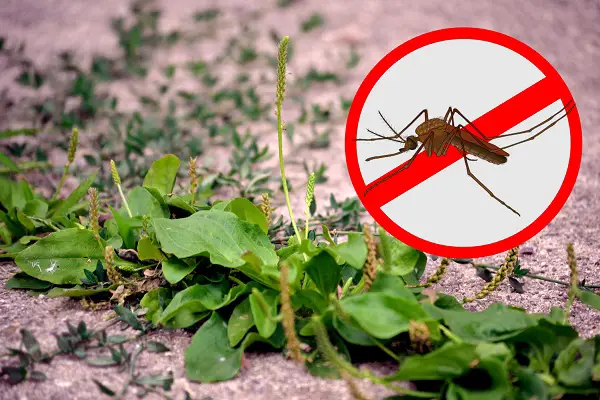Common plantain, or Plantago major, is a perennial herb that can be found on roadsides and waste places from June through October. It has dozens of healing properties, and a renowned American herbalist Rosemary Gladstar calls it the “most common and most useful weed.”
But there is one use that might prove the most beneficial this summer!
Plantain has anti-inflammatory and anti-microbial properties, according to Segen’s Medical Dictionary, and it can be called a natural antibiotic.
The leaves have astringent properties and will pull out any toxins out of the body, making it a great herb to use for mosquito bites.
The Plant’s Origin: Secret of Native Americans
European in origin, when it first appeared in North America in the 1600s, Native Americans called it “White Man’s Foot” because it grows on roadsides, where the ground has been stepped on or somehow disturbed.
Native Americans quickly discovered its medicinal values, and started using it for respiratory problems, back pain, bladder issues, diarrhea, and toothache, but most importantly externally as an emergency skin remedy.
Mosquito Bites Remedy: Making a Poultice
Because plantain leaves draw the toxins out of the skin, they are useful for mosquito and other insect bites, Gladstar writes in Medicinal Herbs. They also work for poison ivy, bee stings, acne, and rashes.
You can make a quick poultice by chopping the washed leaves as small as you can, and adding a few drops of water until the mixture is wet enough to stick to the skin.
Put it on top of the bite, and apply or wrap a bandage or cloth around it to keep it in place. This works the best on new bites, and will almost instantly relieve some inflammation and itchiness.
When the poultice dries out, in approximately 2-4 hours, you can replace it with a new one if necessary. You might need to have a poultice on for 4-12 hours to get the full effect.
If you are out camping or do not have the materials needed to make a poultice, you can just pick a leaf or two, mash them in your hands and put them on the mosquito bite.
Cuts and small wounds
Plantain also has hemostatic properties – though not as strong as yarrow, it can help stop bleeding and will aid faster healing. When applying the plantain leaves to a skin that has a cut or small wound, dip them in boiling water for a few seconds to sterilize before chopping them and making a poultice.
Create a Balm to Carry With You
First, you will need to infuse an oil with plantain leaves (olive or grapeseed oil works best).
1. Gather plantain leaves, wash them and let them sit on a towel overnight
2. Chop the leaves into small pieces – you will need about 1/3 cup
3. Place in a glass jar that fits about a cup of liquid and has a good lid (you don’t want air getting in)
4. Add ½ cup of your choice of oil
5. Optional: add a few drops of Lavender essential oil and/or vitamin E oil to ensure freshness
6. Close with a lid, or a fabric tightly wrapped with a rubber band, and let sit for at least 2 weeks, or up to two months
7. Strain your oil
Once you have the infused oil, you are ready to create a balm:
1. Pour ½ cup of the infused oil into a saucepan and turn the heat on low (high heat would reduce the medicinal value of the oil)
2. Add ½ ounce of beeswax and stir slowly till it melts and mixes with the oil (Tip: experiment with how soft or solid you want the finished product to be. Add more beeswax for a lip balm feel, and more oil for a creamy ointment).
3. Once the two have combined, pour the mixture into a container.
4. Wait a few minutes for it to thicken, and you’re done! Label the jar with the name and date, it will stay fresh for about 1 year.
Emergency Food
Though not everyone likes the taste (it can be bitter when old), plantain leaves contain protein, and many nutrients and vitamins (vitamins A, C, and K), putting it on the master list of foods to eat during an emergency.
Cooking with Plantain
Plantain leaves can be eaten raw in salads, or added to soups, sautéed dishes and side dishes.
Here are a few recipes to try from the Edible Wild Food blog. Enjoy!:
Baked Plantain (http://www.ediblewildfood.com/baked-plantain.aspx)
Nutty Plantain Snack (http://www.ediblewildfood.com/nutty-plantain-snack.aspx)
Plantain Salad (http://www.ediblewildfood.com/plantain-salad.aspx)
Wild Pizza (http://www.ediblewildfood.com/wild-pizza.aspx)
Thanks for installing the Bottom of every post plugin by Corey Salzano. Contact me if you need custom WordPress plugins or website design.






